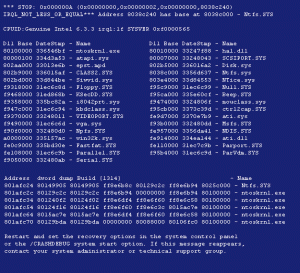MicroSolved, Inc. was recently featured in InfoWorld’s article, “Intrusion detection honeypots simplify network security,” by Roger A. Grimes.
It’s a great review of MSI’s HoneyPoint technology, along with two other honey pot software solutions. The article is very thorough, testing everything from features and logging capability to ease-of-use and value. As Roger stated, intrusion detection is a complicated business, which is why we continue to strive to increase the visibility of the security team within an ever-increasingly insecure world. His use cases are very specific and the article presents a powerful argument for honey pots and their role in modern information security. We commend the author for his work and very much appreciate HoneyPoint’s inclusion in the solution set.
Some of HoneyPoint’s features, namely defensive fuzzing (HornetPoint behavior) and port mining appear to have been misunderstood by the reviewer. He mistakenly compares it to “tarpitting”, which is a technique used to slow down scans by tampering with the TCP packets in the 3 way handshake to delay connections. HornetPoints do not perform any actions at the packet layer, but instead, apply fuzzing routines within the specific emulated protocol (HTTP, SMTP, etc.) to attempt to cause the scanner or worm to fault on the attacking system, a form of self-defense. Port mining simply shoves a large binary file at attacker tools, again with the intent of crashing them, not simply slowing them down. These differences did not seem to be communicated well in the review when we read it.
We completely agree with the author that HoneyPoint has a large feature set and that our reporting and event tracking make it a powerful enterprise tool. We also appreciate his coverage of the plugin capability that allows users to extend and automate their alerting and response capabilities with HoneyPoint. We designed the product to be easy to use and most customers learn to install, configure and manage the product in a simple 2-4 hour virtual session included in every purchase. Our customer’s experience and rating for ease of use varies from what is presented in the review. Customers continually praise HoneyPoint as being one of the easiest enterprise products they have deployed and used.
Lastly, the author’s review makes the point that honey pot tools cannot bind to ports already in use, making them essentially blind to attack traffic on those services already installed on the hosts on which the tool is running. This is a valid truth and represents one of the core reasons why we felt it was important to design HoneyPoint to run across platforms. If a honey pot product can only run in Windows, it cannot bind to ports like 135-139 and 445, which are the common ports used for Windows CIFS. It also cannot bind to ports, and thus provide detection on Windows RPC ports that are in use. As such, a low interaction honey pot deployed only on a stock Windows workstation cannot perform detection of threats like Conficker and other traditional Windows-centric attacks. This leaves an organization using a Windows-constrained detection tool unable to emulate these services and detect these attacks. HoneyPoint, on the other hand, can just as easily be deployed on Linux as on Windows. Using a simple liveCD install (such as Puppy, DSL or the Ubuntu, etc.) you can deploy HoneyPoint on these ports, emulating Windows and thus gaining detection and visibility not available with a Windows-constrained product. We feel, as do many of our clients, that this is a powerful difference between our product and others and that it gives our clients the ability to stud their environment with detection decoys, even at the Windows protocol level, where others are blind.
We designed HoneyPoint not as an academic tool for laboratory use or for those folks wishing to capture packets of the attack tools and write papers about them, but as a real-life, deploy and forget, enterprise threat management system for businesses interested in breaking the attacker life cycle. We are quite proud that the tool is functional, flexible and simplistic. That was the goal from the beginning. We are as proud of the things that our product DOESN’T do to maintain that core focus as we are of the things it DOES do and how it accomplishes them.
Overall, we are in full agreement with InfoWorld: the impact of honey pots in the corporate environment is best understood by serving as an early-warning system. When honey pots are utilized in this way, they are economical and efficient, yet meet the need to identify threats in the network environment. We extend kudos to Roger for his review and for the hard and complex work he did reviewing and comparing the three products.
MSI welcomes this type of review, because our quest to make you safer is what drives us. Clients tell us that we’re good listeners and we love to hear feedback from the community. We will not stop improving our efforts to protect our clients because frankly, the attackers will not stop searching for vulnerabilities. As always, thanks for reading and stay safe out there!


